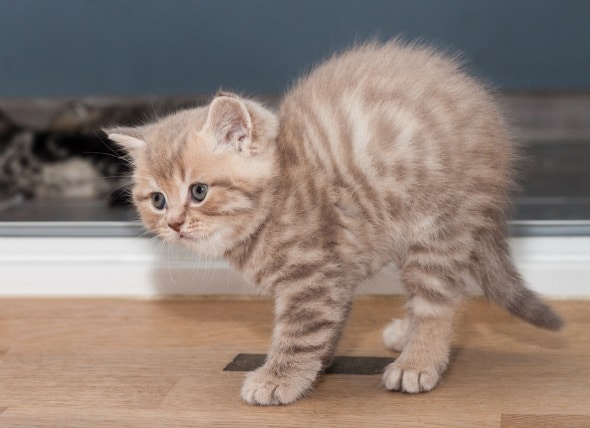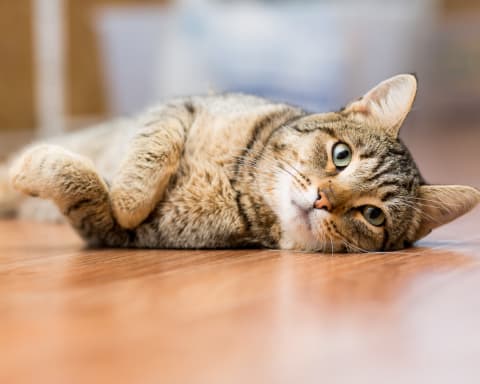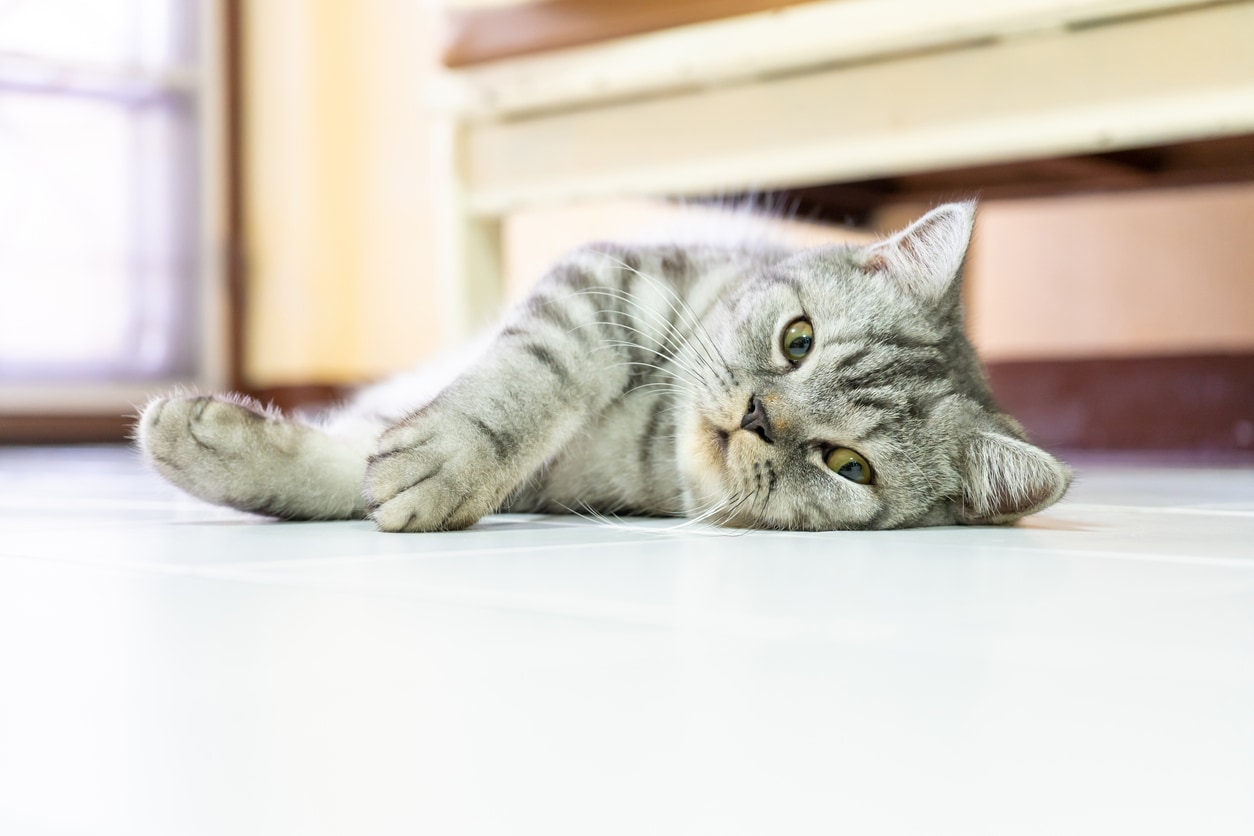neurological disorders in cats back legs
Dewey may suddenly flop down and flail around. Has had blood work no diabetes or discernible disease x-rays.
It is reported more commonly from the United Kingdom than from other countries at least more often than the US.

. Cats can also develop weak and wobbly legs due to injurytrauma or falling from a height. Diabetes organ failure and neurological problems can cause the gradual weakening of a cats rear legs. 1 CKD is defined as decreased kidney function that persists for three or more months and encompasses a continuum of disease from mild kidney damage to end-stage disease.
Does wobbly cat syndrome go away. Types of Feline Neurological Disorders Epilepsy and Seizures. As cerebellar hypoplasia is a non-progressive disorder this will not worsen over time but cats are generally affected for the rest of their lives.
Meningitis is when the. The most common sign of ataxia regardless of the cause is an abnormal gait in which the cat is very unsteady on her feet. The most common cause of rear limb paralysis in cats is a blood clot that goes to the back leg called a saddle thrombus or arterial thromboembolism ATE.
An annoying large list of potential culprits can cause back leg problems. Hip Dysplasia Kitties unfortunate enough to suffer from hip dysplasia will often display rear leg weakness lethargy and tenderness. The result is a weakness in the hind legs which comes from damage to the nerves caused by constant high levels of sugar in the blood.
The two most common neurological issues in cats are related to epilepsy and vestibular syndrome. In this post well take a look at some of the more common neurological disorders your cat may develop. The signs that your cat may be suffering from a neurologic disorder include.
It is reported more commonly from the United Kingdom than from other countries at least more often than the US. Cats suffering from such symptoms are subjected to various diagnostic tests to rule out underlying health concerns. With a spinal cord lesion the toes may drag on the ground as the cat walks traumatizing the tissues of the toes.
A sudden loss of coordination is typical with most canine neurological issues. Altering the way it interacts with its owner and others. Today five days after.
Schedule an appointment with your veterinarian immediately if your cat exhibits one of the following symptoms of neuromuscular disorders in cats. Baylisascaris procyonis is a roundworm found in the small intestine of raccoons. The hip joint developed abnormally and it eventually degenerates.
Plus signs to look out for and when to take your cat to the vet. Theyll also have difficulty standing up especially after a nice long nap. The most common symptoms of brain disorders include.
Osteoarthritis is the most common cause of back leg stiffness in cats aged 10. Neurological disorders in cats back legs Neuropathy is the result of the high levels of glucose affecting the nerves in your cats legs and paws. It may walk in circles.
Seizures Muscle weakness Paralysis Absence of reflexes hyporeflexia Uncoordinated movements Loss of muscle tone hypotonia Loss of control of body movements ataxia Weakness after physical exertion. Meningitis and encephalitis are two very serious brain conditions. Pain may accompany the weakness with tingling and numbness in the limbs.
The cause is unknown. Shes apparently lost control of her bladder. Dysautonomia is a disorder of the autonomic nervous system that can affect both dogs and cats but is much more common in cats.
Cats suffering from hyperthyroidism may also develop certain neurological imbalances such as fatigue tremors of the muscles muscle pain and ventral neck flexion. Reluctance or refusal to use its litter box. And a noticeable change in its gait and apparent sense of balance.
The neurological diseases which affect cats can be infectious inflammatory metabolic vascular and degenerative. The larvae of some roundworms including Toxocara species can invade the central nervous system and cause localized damage in cats. Toxocara larvae may also invade the eye and cause vision loss in people.
Hyperthyroidism Associated Neurological Disorders. They can be the result of acquired diseases trauma genetic inheritance and other causes some of which are idiopathic. Signs typically begin at 3 to 7 years of age and may include weakness incontinence and difficulty using the hind legs.
Degenerative lumbosacral stenosis is a disorder of the vertebrae in the lower back that causes compression of the nerve roots. In cats a common cause of neuropathic pain is diabetes mellitus. Did you know that cats can also suffer from epilepsy and seizures just like their human.
Three days after the surgery she started walking almost normal still has a little wobbly drunken gait but is using her four legs moving her tail purring and eating normally. It is rare in cats. Its larvae can infect people and domesticated animals and.
The most common cause of rear limb paralysis in cats is a blood clot that goes to the back leg called a saddle thrombus or arterial thromboembolism ATE. Common Canine Neurological Disorders Cerebellar Degeneration Vestibular Disease Wobblers Syndrome Inherited Polyneuropathy Epilepsy Degenerative Myelopathy DM Intervertebral Disc Disease IVDD Parkinsons Disease Every case is different and the care needed will vary. My 12-year-old female kitty is unable to use her hind legs.
With a vestibular disorder it is also common to see abnormal movement of the eyes typically drifting from. An affected cat says Dr. At this point Xica is doing much better.

Flynt Le Chaton Paralyse Retrouve Miraculeusement L Usage De Ses Pattes Cats Kitten Animals

Cat Mobility Loss Causes And Solutions Cat Wheelchair Feline Mobility

Spinal And Vertebral Birth Defects In Cats Petmd

Neurological Disorder In Cats A Helpful Guide Canna Pet

Neurological Disease Cat Bishops Stortford Vets

Cerebellar Hypoplasia In Cats Symptoms Diagnosis And Care Firstvet

Feline Herpesvirus Fhv Infection International Cat Care

Why Are My Cat S Back Legs Not Working Weak Wobbly And Stiff

Cat Limping Possible Causes And What To Do Veterinary Specialists Of The Rockies

Fungal Infections In Cats Causes Symptoms Treatment Flat Rock Vet

Neurological Disorder In Cats A Helpful Guide Canna Pet

Cute Rescue Cerebellar Hypoplasia Kitty Mario What Anyone Calls Me Super Cute Cats Cats Furry Friend

Cat Broken Leg Symptoms Cuteness Cats Pets Dog Care

Neurological Disease Cat Bishops Stortford Vets

Paralyzed Kitten Muffin Survives Risky Surgery Kitten Survival Cats

Ataxia In Cats Loss Of Balance In Cats Petmd

What Is Cerebellar Hypoplasia Kitty Cat Chronicles Natural Pet Care Cat Fleas Fleas

Cat With Cerebral Palsy Like Brain Disorder Benefits From Wheelchair Mobility Cats Cute Animal Pictures Animals Amazing

